If you go back (to my ski report) and look carefully at the table of my skiing activity you will see an "A" on February 17 and 21 — that means I was "Alpine" skiing. A few years ago if someone asked me to make a list of things I’d rather be doing in preferential order, Alpine skiing would be at the top of that list. Today it is not even on the list. While no less fun than it ever was, for me Alpine skiing has been completely replaced by Nordic skiing.
I also used to enjoy riding a 750cc Kawasaki Ninja motorcycle. As with skiing, there is nothing about the motorcycle experience I can not achieve with a bicycle. That sounds stupid, so let’s explore that a bit.
I’ve recently become interested in the branch of philosophy called phenomenology. This involves thinking about experiences not as objective data points but as experiences that are experienced by an individual. For example, imagine if I tell you about riding my motorcycle at 120mph/200kph and then ask you to tell me about a time when you were going really fast. Got one in mind? Was it that time you were in Kansas in the middle of the night asleep in a tailwind that was pushing the Boeing 737 you were in? No? I wouldn’t have picked that one either. But if we were talking about "fast" surely something like that is up there, right? Maybe that’s how things work in the "real" world, but it’s not how things really work in the real world. That’s phenomenology.
One day after a superb performance racing to the top of Saddleback Mountain in Orange County on my bicycle, I did something (else) memorable. I came down that mountain in the most aggressive descent of my life. I have never seen a YouTube video of crazy "downhillers" doing anything crazier than I did that day. I was right on the edge of what was possible. When I got to the bottom I marveled at the run and thought to myself, "Wow — that was fucking stupid." Sure, there were some truly objectively fast speeds involved — a motorcycle would not have made things faster. But what had really made the experience intense transcended pure numerical physics. Maybe I got up to 80kph/50mph momentarily. Although that was on unpaved roads, that’s less than half of what I routinely did on my motorcycle. Yet, that day I knew I never needed to ride a motorcycle again. The motorcycle, I realized, was superfluous. I also realized that while it had been fun, the absurd danger was unsustainable and I probably should get my thrills other ways.
I still enjoy spontaneous descents but I don’t agressively seek them out or push my luck. Instead, thanks to phenomenology, the most intense feeling of speed I get now on the bike is climbing, just like my memory of the first part of that day on Saddleback Mountain.
And so it is with skiing. While I love skiing in general, I no longer require the motorized form to feel its excitement and intensity. In fact, I now feel like I require a more active participation than simply standing mostly still on two planks and getting pushed along in the same way a Boeing 737 pushes you. If you think that Alpine skiing is an active sport — and that’s what you like about it — I’ve got some good news about what an active sport really can look like.
If you believe that you like the raw speed and power of Alpine skiing, why not just ride a snowmobile? Or perhaps just ski off a cliff? (I know, some crazy people do ski off cliffs.) It turns out if you get skis that are less effective at dissipating high energy freefalls (no metal edges, heel not locked) you can still ski at the limit of those skis. Since you’re probably not skiing out of an airplane door and saving yourself from death with a parachute, we can conclude that you’re not after maximum "skiing" speed per se. So why not slightly reduce the amount of energy you can dissipate by switching to Nordic skis? (Nordic skis are, in my opinion, faster than Alpine skis — they’re narrow, straight tracking, and aggressively optimized for low resistance — but the difference is in how easy it is to stop.)
A correctly designed/chosen Nordic course is perfectly exciting and challenging because it puts you in situations of maximum skiing speed (i.e. the limit of your abilities to not wipe out) and tries to turn stopping problems into recycled energy. Still, why not just fall down the mountain the dumb old Alpine way? The miracle of Nordic skiing is that you can also go up.
If you’re not athletic and you want the thrill of bicycle riding, definitely consider getting a motorcycle. If you’re not athletic and you want the thrill of skiing, sure, Alpine is fine. But if you are athletic… Do you really need that "help"? Sure it’s not as bad as riding around in a motorized wheelchair because you’re too lazy to walk (i.e. driving a car), but for athletic people it should be considered similar.
I get the feeling that people think that Nordic skiing is boring and
lacks high speed drama. Well, I would like to invite you to this crazy
ass groomed Nordic skiing trail (below #46 on
this map).
I’m not sure you’re even supposed to ski down it (up only) but I did
(both directions). I did not die and I considered that a pretty
impressive accomplishment (both directions).
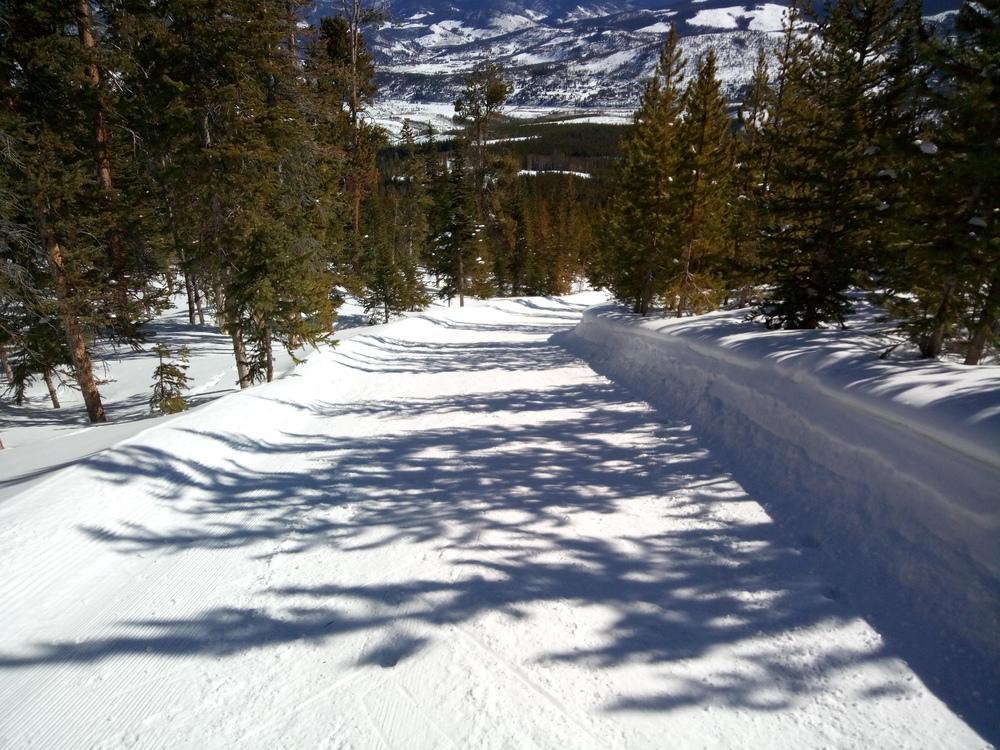
For comparison, here is a black diamond Alpine descent through steep moguls that I thought was impressive enough to take a photo of.
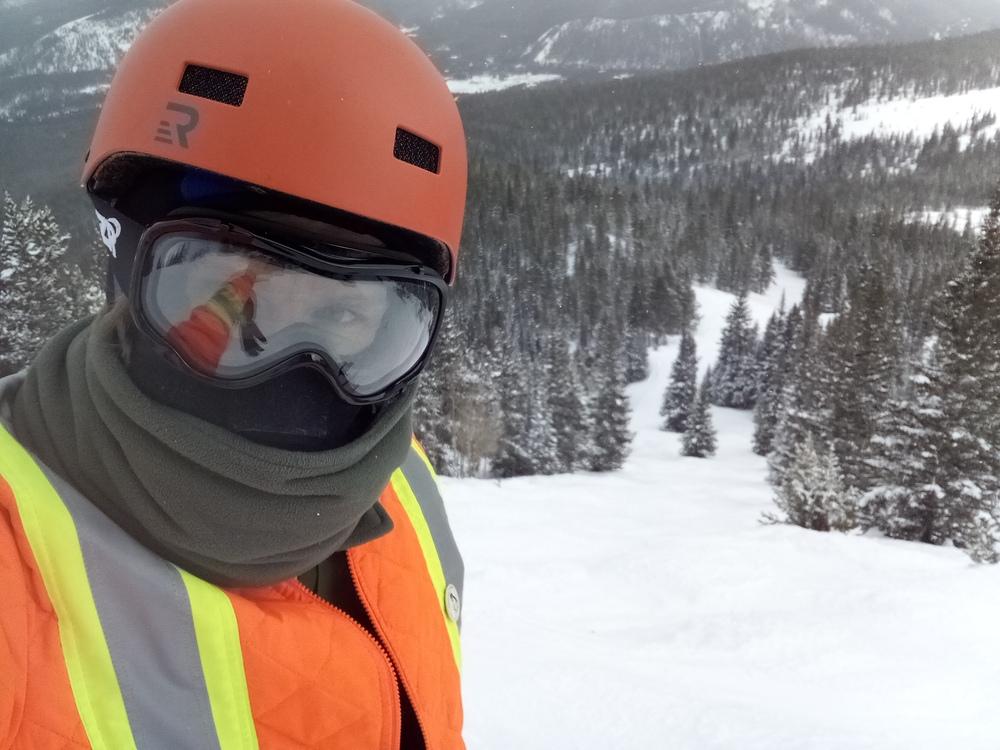
When I compare the two experiences (phenomenologically), the Nordic one was way more intense and memorable. But the sky is the limit. Check out this video of these crazy and talented Nordic skiers — it would be hard to argue that they’re the ones lacking the full skiing experience. Or consider the search term "nordix" which seems to be some kind of competition that is so absurd it is quite deliberately hilarious.
If there’s something (good) about the Alpine skiing experience that these guys are missing, I’m not seeing it. And to belabor the point, if Alpine skiers competed on this Nordix course, they would be destroyed, literally stopping in their tracks as the slope turned upward.
I believe that Alpine skiing is — for athletic people at least — an impoverished form of skiing. But there are many more reasons to consider Nordic skiing.
Cheap/Free
Here I’m on the Boreas Pass looking back northwest to where the (Alpine) skiing costs money. SUVs full of it!
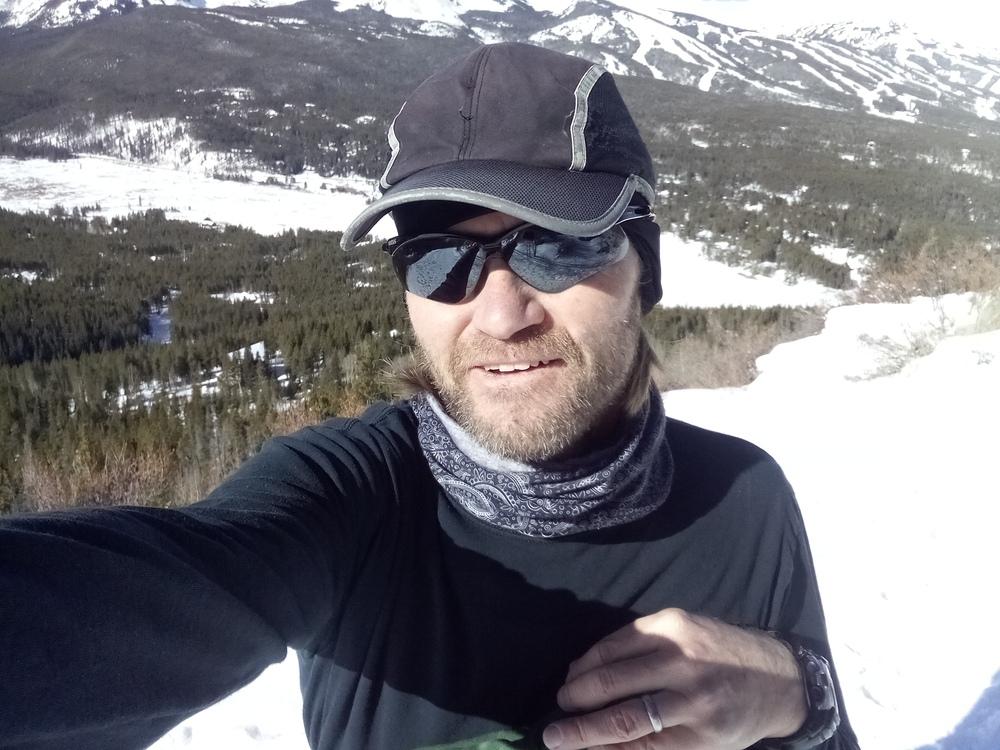
I’m delighted with having this gorgeous trail all to myself. Cost? $0.
100% Action, 0% Waiting
The amount of standing and sitting around in the freezing cold doing absolutely nothing while Alpine skiing is closer to ice fishing than any other sport I can think of. I’m not really sure of its rules, but curling seems slightly more active than Alpine skiing. Sorry — do some Nordic skiing and you’ll see what I mean.
One of the commandments of my religion requires that: if a day includes the possibility for skiing, then there must be skiing. I found myself sitting on the chairlift constantly thinking, "What am I doing here wasting this fine snow? I could be skiing!"
No Lift Lines
The fact that the slopes are crowded enough to need Disneyland style queue control is a bad sign, but the whole thing is stressful.
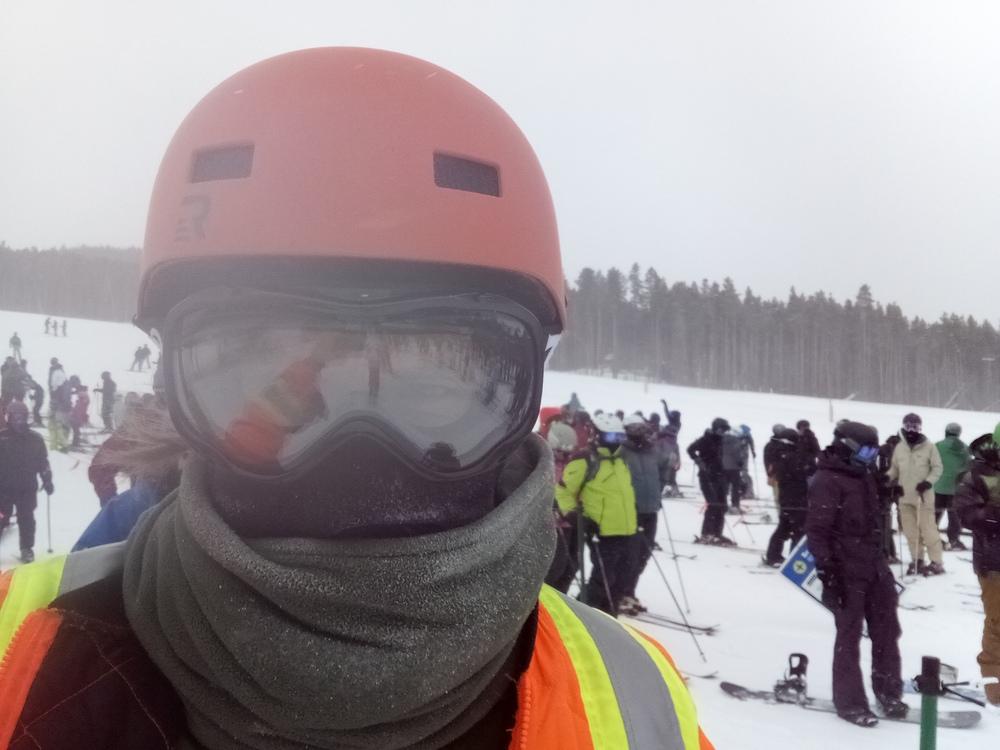
Beyond just the painful standing around doing nothing in the freezing cold in very uncomfortable footwear, there’s a lot of anxiety about what line lane to get in, is someone standing on your skis, whom will you share the chair with, etc. And now The Plague. I pretty much never like hanging out with a bunch of frustrated people all competing for the same resource I am.
Less Time
Nordic skiing actually takes less time. Let’s say you’re working from "home" in nice place like Breckenridge (which I can not stress enough is totally a possible thing if you’re smarter than pre-2020 Silicon Valley folk). Presumably you need to put in your daily contribution to the software mines or whatever work you do. I find that Nordic skiing for hours is a very special situation that will be more than plenty. I find that even 30 minutes is a great daily workout on cross-country skis. On the other hand, to properly get any value out of a trip to an Alpine resort, you pretty much should be waiting in line as the lifts open and skiing your last run just after they close. Well, that’s how I do it. Which is both exhausting and very time consuming.
Natural Breaks
"Natural break" is a professional cycling euphemism for "taking a piss". And the other side of that coin is not being dehydrated (e.g. drinking coffee). A memorable moment Alpine skiing at Breck this year involved looking for a bathroom and finding that they were down several flights of stairs! If you’ve never worn (Alpine) ski boots before, imagine wearing shoes made of 30lbs/15kg of framing lumber. Stairs!
Nordic skiing by contrast is a lot easier. Obviously way out in the wild woods is not a problem. But even when I came into the lodge to use the BNC bathroom, one of the guys who worked there explicitly mentioned "other options".
Despite that, when I’m getting dehydrated Nordic skiing, I’m usually near a handful of clean snow to eat. On Alpine slopes, that fake snow is often made from (gray?) water from who-knows-where.
Free Parking
This shows the parking situation at at BNC.
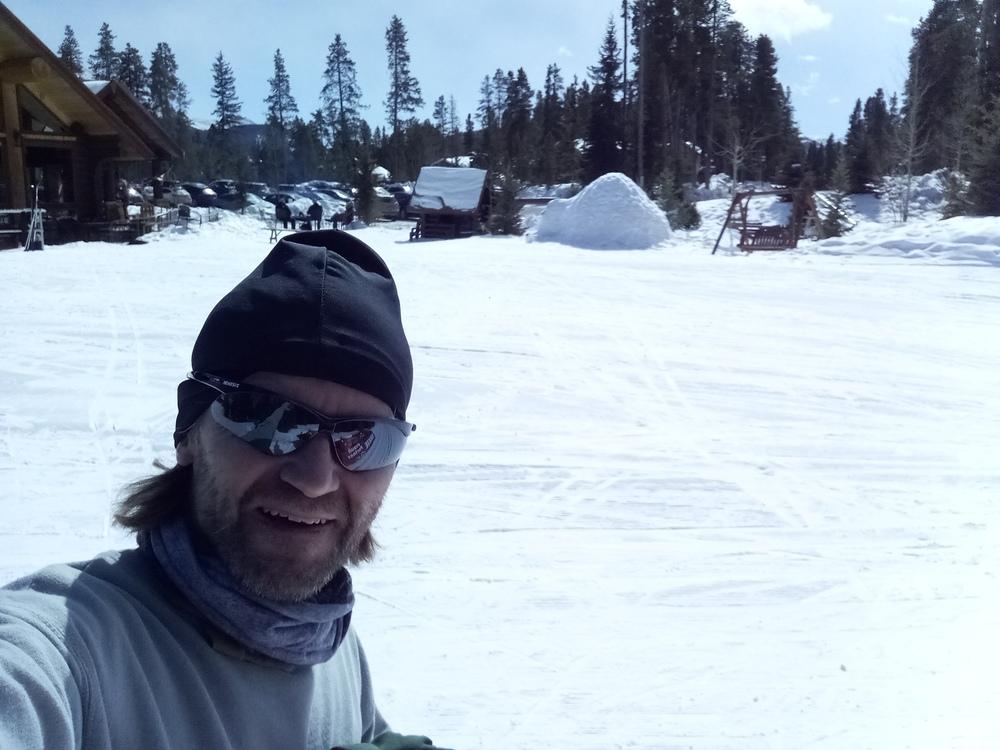
"My" (rented) vehicle is within sight. There are fires to sit by to relax or change shoes (right above my head in this shot). (Yes, that is a bona fide igloo!)
In contrast, the parking hassle at every Alpine skiing situation I’ve ever been to has ranged from a not so great hike in lumber boots to a substantial ordeal. When I’m at home, the Nordic ski trails I usually use go right past my backyard — if enough snow falls I can put my skis on in my garage.
Ecology
Some people don’t eat meat because not killing animals is more fun for them; but ecologically motivated vegetarianism is valid too. Skiing is similar. Alpine skiing is fundamentally a motorsport. Like skydiving from airplanes or waterskiing a rope’s length away from a motorboat, the sport roughly distances you from that truth while you’re actively doing the fun part. But make no mistake — it is a motorsport. What’s worse is because your motor is locked in to a specific place, you need there to be snow in that specific place; this means that snow-making equipment must be more heavily used with its non-negligible footprint. And while Nordic centers with groomed trails are fun, they are not essential. I think some grooming is necessary for lift accessible Alpine slopes.
Alpine skiing concentrates throngs of insensitive tourists into sensitive Alpine biomes. With Nordic skiing, besides being low-impact in pristine natural environments, you can easily repurpose other ecological disasters like clear cut farmland, strip mines, and, worse, golf courses. Nordic skiing improves the value proposition for converting rail corridors into bike paths, bike paths in general, fire road and forest trail maintenance, etc.
I will never expect Nordic skiing to become a big part of commuting, but it is a form of transportation — I used to ski to school in Alaska.
Avalanche Management
Having large concentrations of people packed into structures at the base of steep snow-covered slopes is begging for avalanche problems. Even in relatively hilly Nordic skiing terrain, this is much less of a problem. You can (and should!) also leave pretty much all of the trees intact.
Cheap Equipment
The owner of one of the Nordic centers was showing off the fanciest skis they sell and I asked how much they were - about 3 days worth of Alpine lift tickets. (Chances are very good I will be getting some!) Compared to the heavy price tags on Alpine equipment, I find Nordic gear, even fancy skis or carbon fiber poles, to be a steal. Speaking of stealing, the Alpine skis I once owned cost $10 at the swap meet. I thought that was a steal but it later occurred to me that they may have been literally stolen. Like my dad’s Alpine skis were on this trip.
Light Equipment
Alpine gear doesn’t just come with heavy price tags, it’s physically heavy too. You don’t notice this until you’ve played around with Nordic gear and then it becomes painfully obvious. My Nordic skis, bindings, boots, poles, and all the clothes I typically wear skiing weigh about as much as an Alpine boot.
Simple Equipment
In some ways dressing for Alpine skiing is simple — it will be very cold. That is because you’re not really doing anything almost all of the time. But addressing just how cold you’ll be and what to do about it is quite a challenge. With Nordic skiing, I could literally ski naked and not freeze to death. Eventually I wouldn’t even be cold. No matter what the weather. Instead of the Antarctica gear you’ll need to be comfortable in a high-altitude white-out on a stopped chair lift, for Nordic skiing you basically need to be dressed with some clothes.
Summer Fun
I don’t know how you train for Alpine skiing in the summer. Sit still with your feet weighted and dangling off a high chair? But Nordic skiing has all kinds of cool things to play with in the summer. It’s called roller skiing. I’m totally going to get some! These exercise machines are famous, and these are also high quality. If you live near Austria, there’s even an indoor training hall for Nordic skiing. (I know what I’m building if I ever become a billionaire.)
Never Stuck
With Nordic skiing, there’s never that awkward struggle to traverse a long horizontal stretch on heavy downhill skis. I actually enjoyed skating those stretches as much as any other part of the "downhill" experience, which was a hint to me. When I see sad, sad snowboarders on such terrain or struggling to hop over to and from the lift lines I can’t help shaking my head and thinking: these people paid to do that.
Injury
Just like no one has ever said that it’s somehow healthy or builds face strength for boxers to get punched in the face incessantly, no one ever has thought that mogul skiing is good for anyone’s knees. And hanging heavy weights on your feet and dangling them over the edge of a very tall chair for hours is one of the most painful parts of Alpine skiing for me. I was amazed at the people who didn’t want to use the pull-down foot rests when they were available. Eventually, I just started deploying it pre-emptively — if the group I filled out the lift with disagreed, I was prepared to push them all off the chair.
And that’s just subtle chronic problems. People (now) wear helmets Alpine skiing and for a good reason!
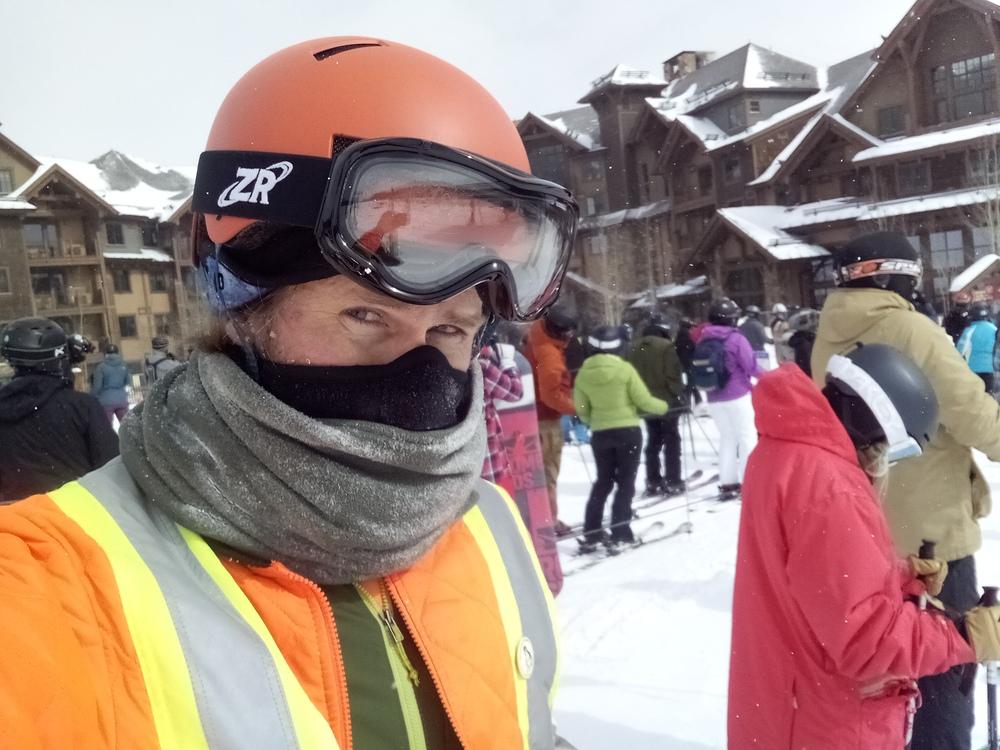
(More lines!) This trip is the first time I’ve ever skied wearing a helmet. Might be the last! I actually own that helmet for winter bike riding.
When I was Alpine skiing in my 20s, I once launched myself off a jump I had surveyed previously only to find, mid-air, a gormless noob standing in the landing zone. I avoided decapitating him with some very adroit aerial adjustments which caused me to land with one ski going straight into a hole. If that sounds painful, yes, it was. And everyone involved got off lucky — I’m thankful my knee wasn’t permanently damaged. You can ski the same terrain on Nordic skis for double the stupidity, but you can also comfortably go elsewhere and avoid almost all of the stupidity. Your choice.
Your Best Friend
Bring your dog! A lot of people have dogs and dogs like going outside and being active. But Alpine skiing is not fun for dogs. Nordic skiing, however, is fun for dogs and their people. There is even an official sub-sport of animal-powered skiing called skijoring. I saw an Alaskan Malamute at the park the other day and I knew from direct and personal experience with such a dog in Alaska, that he’d much rather be pulling me on skis than, well, anything else.
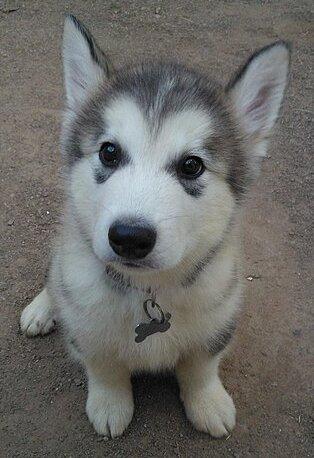
This adorable machine converts Nordic skiing into Alpine skiing — why would you not do it this way?
The Wider Winter World
With Alpine skiing you need snow and just the right elevation change. With Nordic skiing you need snow. This opens up a lot of possibilities. Alberta, Saskatchewan, Ontario are very large and are, in their entirety, great for human-powered skiing.
Adventure
You want a real experience? Go ski touring. These cool people are showing off some awesome skiing in some awesome Alaskan settings.
Or try camping somewhere very exotic accessible only by skis. Or stay in one of the cool mountain huts only accessible by very hard core people. Visit the south pole like this awesome girl did!
Cool
If you basically plan your day around avoiding crowds as a top priority (ahem), well, here’s what I got — yet more damn lines!
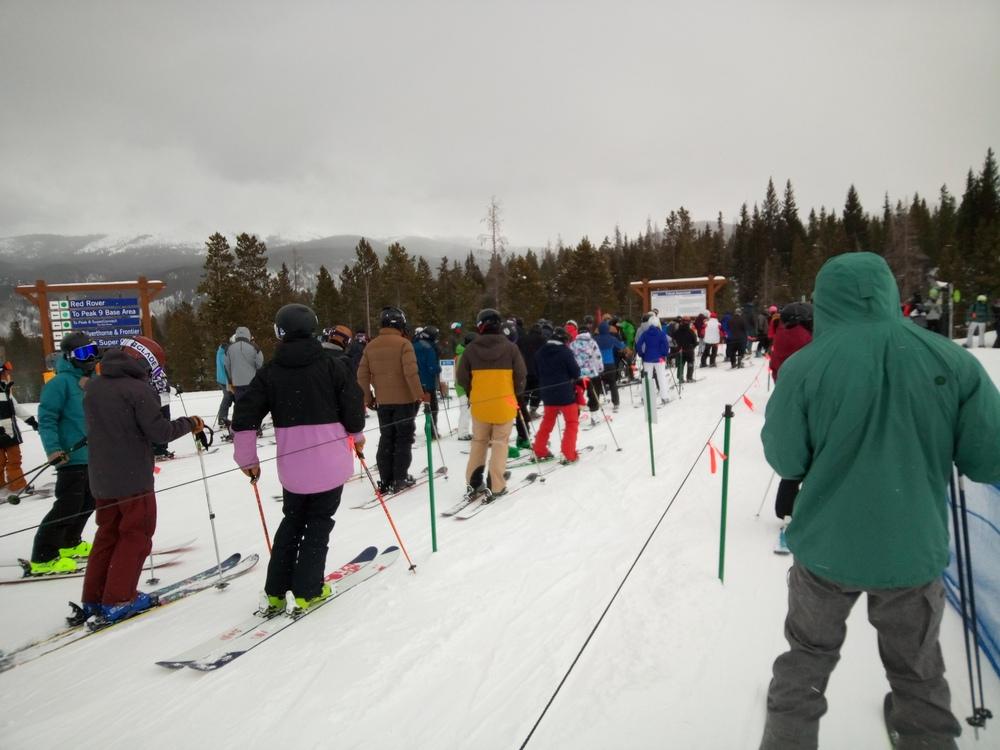
But that photo prompts another topic. Remember when there was a winter Olympic sport that was so cool that it made people become sick — or at least use that word a lot? I remember some days on Mammoth where riding the lifts provided quite an entertaining spectacle of endless stunt daredevils rolling down the mountain with snowboards strapped to their feet. Good that it was entertaining because the lifts stopped every few minutes to untangle some boarders who could not negotiate the transition to or from the sedentary lifestyle of the lift. Skiers weren’t just in the minority, but the narrow minority. But today, check out the ratio of boarders. There are even kids learning to ski today. That’s quite an amazing counter-revolution!
What that teaches us is that a lot of people on the slopes are really after a fashion more than engaged in an activity they’d fight to pursue even if nobody saw them. Well, potentially. These days, with the shrinking lack of opportunity thanks to our warming planet and growing population, the people out on the slopes generally fought to be there and could have been doing a lot of other fun things. But that level of not giving a shit what else there is to do that other people do is exactly what being cool is. And I would argue that at this point, Nordic skiing is that kind of cool.
Nordic skiing used to be seen as very square, sort of like being a non-smoker before 1980. However human-powered skiing is not nearly as uncool as it used to be.
When America’s newest ski resort opened on December 31st, Bluebird Backcountry was uniquely adapted to social-distancing measures because it lacked one thing that every other ski resort in America has: lifts. There were no queues to stand in, worrying about your neighbour breathing on you. Instead of shuttling ticket-holders up the mountain by gondola, lifts and other mechanised means, the new resort made skiers and snowboarders slide up the mountain before gliding down.
…
From 2016 to March 2020, sales of touring gear (such as skis with bindings that release at the heel for skiing up) more than doubled, going from $39m to $79m. By the 2017-18 season, 5% of America’s 30m skiers and snowboarders were venturing out of bounds. Although some resorts are open to backcountry skiers, most choose wilder environs, such as national parks, where they find solitude and better powder.
Now covid-19 has supercharged the growth of the sport. In March last year backcountry-gear sales leapt 34% compared with the year before. Retailers reported that, a week after resorts were forced to shut down, much of their stock was sold out. Car parks at popular access spots were full. This year most resorts are open but the boom continues. Manufacturers and retailers had increased the supply of skis, boots and the like. Yet many stores are still running low. Doug Bittinger, the owner of Mountain Outfitters in Breckenridge, Colorado, reported that he had sold as much by late December as in the whole 2019-20 season. Now he has very limited stock.
Well, if what I saw out on the trails and at the Nordic centers was a "boom" then there’s still a lot of room in the sport of Nordic skiing to welcome cool athletic people who love to ski so much that they’ll climb mountains to do it.